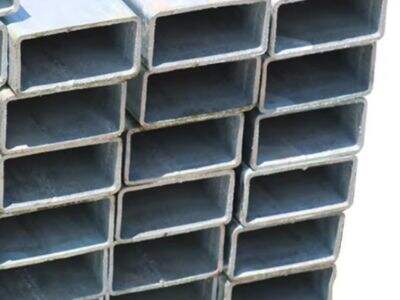L'acciaio galvanizzato è un materiale spesso e duraturo che è ampiamente riconosciuto per la sua resistenza. Potresti chiederti: quanto dura davvero? Quando si tratta di comprendere un materiale come l'acciaio galvanizzato durante il processo decisionale per l'utilizzo nella tua casa o nel tuo business, ci sono alcune cose fondamentali che devi sapere.
Cosa dovete sapere
L'acciaio galvanizzato viene prodotto quando un acciaio normale viene rivestito con un strato di zinco. Questo rivestimento è molto importante, poiché protegge l'acciaio dalla ruggine e dai danni. La ruggine può indebolire il metallo e causarne la degradazione. Ci sono molti fattori che influiscono sulla formazione di ruggine sull'acciaio galvanizzato in base al trattamento superficiale e alle condizioni ambientali.
Suggerimenti e trucchi
Un'adeguata manutenzione è fondamentale per garantire che il tuo acciaio galvanizzato duri il più a lungo possibile.
Alcuni Semplici e Ottimi Consigli per Mantenere il Tuo Acciaio Galvanizzato in Buone Condizioni:
Mantienilo pulito: Lavare regolarmente il tuo acciaio galvanizzato con sapone e acqua è uno dei modi migliori per evitare che si accumulino sporcizia e sporco. La sporcizia accumulata può trattenere umidità che causa la ruggine. Puliscilo spesso per aiutare a prevenire problemi.
Cerca danni: Dovresti ispezionare periodicamente il tuo acciaio galvanizzato. Controlla eventuali segni di usura come macchie di ruggine o crepe nel rivestimento protettivo. Se noti qualche danno, è meglio intervenire il prima possibile.
Riapri il rivestimento: Se ci sono aree in cui il rivestimento è danneggiato, puoi riparare quelle aree applicando una vernice al zinco. Questo aiuterà a mantenere quelle aree libere dalla ruggine e ad avere un aspetto migliore.
L'impatto della temperatura e dell'umidità sull'acciaio galvanizzato
L'acciaio galvanizzato a immersione calda è progettato per resistere a varie condizioni meteorologiche, ma fattori come temperatura e umidità influiscono sulla longevità del materiale. Ecco un'analisi più approfondita di come questi fattori possano influenzare l'acciaio galvanizzato:
Temperature molto alte o molto basse: L'acciaio galvanizzato può espandersi e contrarsi a temperature estreme. Non significa che non possa crescere (o restringersi) un po'. Se ciò accade troppo frequentemente, potrebbe permettere la formazione di crepe nel rivestimento protettivo. L'acciaio crepato è più probabile che sviluppi ruggine.
Umidità: L'umidità descrive il contenuto di umidità nell'aria. L'acciaio galvanizzato tende a arrugginire più velocemente quando l'aria è estremamente umida. Se l'aria è eccessivamente secca, l'acciaio galvanizzato può diventare fragile, rendendolo incline a rompersi.
Segni di usura
L'acciaio galvanizzato è estremamente resistente, tuttavia, non è invulnerabile. Ciò significa che ci sono sintomi di usura da monitorare:
Macchie di ruggine: Se si trovano macchie di ruggine sull'acciaio galvanizzato, è un segno che il rivestimento protettivo sta iniziando a logorarsi. Le macchie di ruggine devono essere trattate il prima possibile per prevenire ulteriori danni.
Fessure: Se noti delle fessure nel rivestimento, assicurati di ripararle subito. Puoi trattarle con un composto ricco di zinco per rallentare leggermente la formazione di nuova ruggine.
Ammodernamenti o graffi: Gli ammodernamenti o i graffi sul rivestimento possono causare la formazione di ruggine. Se vedi dei denti o dei graffi, fai riparare immediatamente per proteggere l'acciaio galvanizzato.
Differenze tra acciaio galvanizzato e altri materiali
Negli Stati Uniti, l'acciaio galvanizzato è il materiale più popolare per i progetti grazie alla sua durata e lunga vita operativa. Come si confronta l'acciaio galvanizzato con altri materiali comuni?
Acciaio galvanizzato vs Alluminio: L'acciaio galvanizzato tende a durare più a lungo dell'alluminio. Questo è dovuto al fatto che l'acciaio galvanizzato è più resistente e offre una migliore resistenza alla ruggine e ai danni causati dagli elementi atmosferici.
Acciaio galvanizzato vs Legno: L'acciaio galvanizzato è molto più duro rispetto al legno. Non marcisce o degrada quando è bagnato, il che lo rende superiore al legno per l'uso all'esterno.
Acciaio galvanizzato vs. PVC: il PVC è un materiale sintetico comunemente utilizzato per una vasta gamma di applicazioni. Non arrugginisce, anche se può diventare fragile con l'età. D'altra parte, l'acciaio galvanizzato tende ad essere più resistente e in grado di sopportare più usura rispetto al PVC.
 EN
EN
 AR
AR
 NL
NL
 FI
FI
 FR
FR
 DE
DE
 EL
EL
 HI
HI
 IT
IT
 JA
JA
 KO
KO
 PT
PT
 RO
RO
 RU
RU
 ES
ES
 SV
SV
 TL
TL
 IW
IW
 ID
ID
 SR
SR
 UK
UK
 VI
VI
 ET
ET
 HU
HU
 MT
MT
 TH
TH
 TR
TR
 FA
FA
 AF
AF
 MS
MS
 SW
SW
 MK
MK
 KA
KA
 BN
BN
 BS
BS
 LO
LO
 MN
MN
 MY
MY
 UZ
UZ



